Ron del Barrilito Has Spent 144 Years Pursuing Rum Perfection
Photos via Ron del Barrilito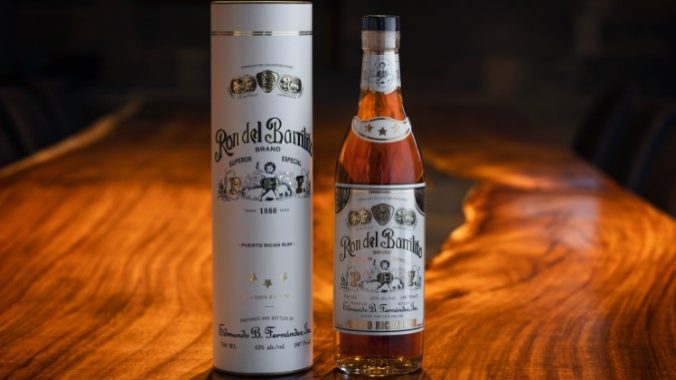
On any given morning at Hacienda Santa Ana in Bayamón, Puerto Rico, you’re likely to observe a few things occurring. The master cooper of Ron del Barrlito is probably around, tinkering with barrels or repairing old sherry casks as he has every day on this site for the last 57 years. The master blender, meanwhile, is drawing samples from rum-filled sherry casks ranging from 3 to 40 years old, carefully assessing their development as he plans how to use them in blending future batches of the company’s flagship products. Small groups of inky, chattering Greater Antillean Grackles flit around, alighting on the century old windmill, or the antique truck once used to deliver rum around the island. In the still of a winter morning, the balmy climate still hovering in the mid-80s, you’d be forgiven for not immediately being able to place what year it is: This place looks and feels practically the same in 2024 as it would have in 1954, or earlier. Hacienda Santa Ana is frozen in time, in a way few modern distilleries could match.
Part of the immediate reason why is that there’s no gleaming, modern industrial column still to be seen on any tour of the premises. No rum is being distilled here at all, in fact–Ron del Barrilito sources its product as a relatively neutral, unaged column still rum from the Dominican Republic, before embarking on a years-long process of transforming that spirit into something that is truly one of a kind. That’s what has been happening on this site for 144 years at this point, almost entirely unchanged from the product that was first sold by the company in 1880.
That kind of ideological consistency is a foreign concept, practically an alien one, to the modern spirits world, defined as it now often is by a constant flow of new product launches that are discarded or reimagined as quickly as they arrive. Ron del Barrilito, on the other hand, has had one flagship rum (3 Stars) for its 144 years, and that’s the way things will remain. It’s a choice that reflects the single-minded obsession of company founder Pedro Fernández, whose family shepherded the brand through its next century plus of rum production.
Caribbean Rum, French Techniques
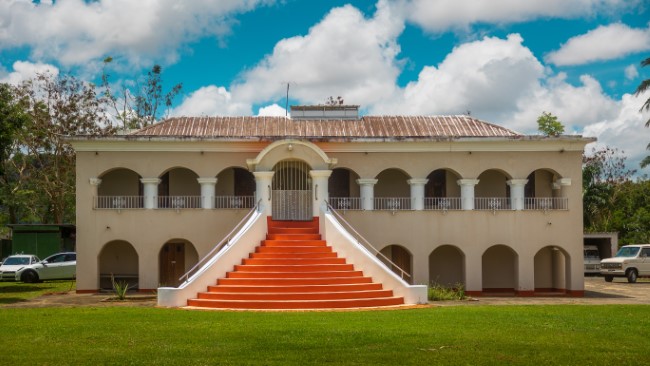
The land upon which Ron del Barrilito is produced, Hacienda Santa Ana, has been worked by the Fernández family ever since the arrival of patriarch Fernando Fernández of Spain in the year 1787. There, the family grew sugar cane long before they began to produce rum, a process now sadly reversed, the commercial sugar cane industry of Puerto Rico having long since dried up. It wasn’t until the grandson of Fernando, Pedro Fernández, went to study engineering in France in the 1860s that the family’s interests turned to distilled spirits.
There, Pedro was struck by the elegance and sophistication of French brandy and cognac production, and the painstaking aging and blending of many distillates that went into producing a superior batch. When he returned to Puerto Rico, he brought with him this knowledge and finesse, applying it to the local spirit that was readily available to him, rum. Sourcing exclusively Spanish sherry casks, he began aging vast amounts of rum, blending it with smaller amounts of rum macerated with local stone fruit and spices. And he kept at it for a decade before turning rum into a commercial venture, coining the name Ron del Barrilito.
That product is the very same bottle of rum that still serves as the company’s flagship today, Ron del Barrilito Three Stars. A blend of column still rums aged from 6-10 years, entirely in former oloroso sherry casks, it is gently fortified with the same portion of macerated rum that rests on a secret array of local fruits and spices. One might expect this to result in the classification of Ron del Barrilito as “spiced rum,” but in reality this portion is intended to be a very subtle component of the overall flavor profile; a flourish rather than a star feature. The company’s rum is instead defined by its delicate interplay between casks of various ages, each of which has of course gone on its own unique journey as it ages in the tropical heat of Hacienda Santa Ana’s warehouses. Two casks filled on the same day, spending 10 years sitting next to each other, can result in wildly different spirits thanks to the interplay of air, leakage, evaporation and the arcane mysteries of oak interaction.
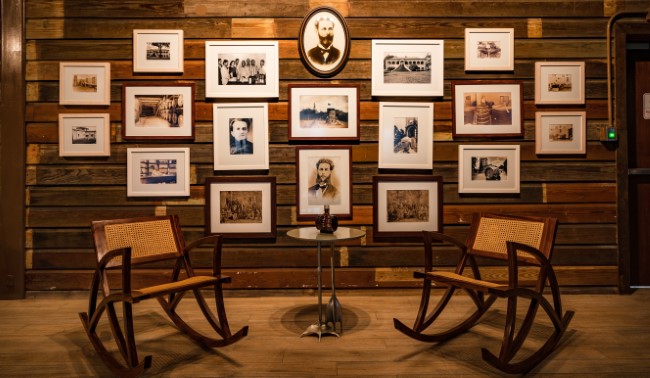
The Fernández family tree at the new Ron del Barrilito visitor’s center.
For the first 40 years of its existence, 3 Stars remained the sole Ron del Barrilito product, until the 1920 enactment of Prohibition in the U.S.–with Puerto Rico already a U.S. territory–stopped local rum production in its tracks for the next 13 years. So too did this gap present Ron del Barrilito with a particularly large challenge once Prohibition in the U.S. was lifted at the end of 1933, because of the particularly large lag inherent in creating a blended 6-10 year old product. This era therefore saw the introduction of just the second Ron del Barrilito brand, 2 Stars, a more lightly aged 3-5 year old blend that to this day sees versatile use in the cocktail world in particular.
With 2 Stars, the company was able to get its product back on shelves a little sooner, but at the end of the day this was still a remarkably disciplined stance to take, one that reflected the unwavering quality standards of Pedro Fernández and his preference for Old World technique. Ron del Barrilito absolutely could have begun selling unaged white rum in the years immediately following Prohibition, but even that 13 year gap couldn’t upend the company’s specific way of doing things, and their unique style of maturation. Edmundo Fernández, running the company at the time, was known for his uncompromising adherence to the Barrilito tradition, as well as his fiercely independent streak. In 1952, Edmundo laid down a barrel with the instructions that this special cask–now referred to on the campus as La Doña–was only to be opened and shared with the town in the event that Puerto Rico achieved its independence from the U.S. It still sits in a reverent place of honor in the warehouse, 72 years later, a silent testament to the company’s hopeful outlook and national pride.
Ron del Barrilito Embraces its Future
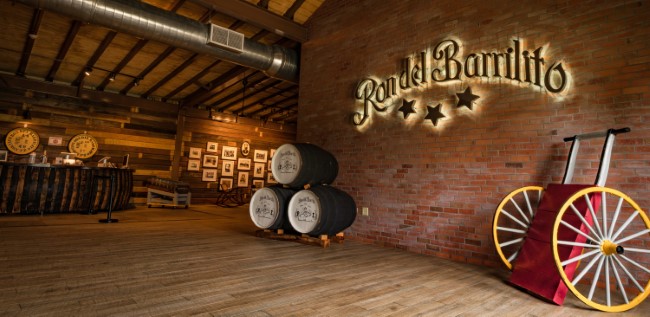
Running a family business for roughly a century and a half, through national Prohibition and incredible technological development, was a startling achievement. When Ron del Barrilito was founded, there were only 38 U.S. states and we were firmly in the middle of the Wild West era. In the 2010s, meanwhile, fifth and sixth generation Fernández family members continued to keep the tradition alive, but the strains of modernity and a lack of apparent heirs to the empire threatened to end rum production at Hacienda Santa Ana for good.
The truth of the matter is that for all those decades, Ron del Barrilito had always been run as more of an artisanal expression of the creator’s passion for rum, than as a profit-maximizing business. Members of the Fernández family were more concerned with the quality of their product than how much of it they could sell, and rarely tried to actively grow the brand in any specific direction. The actual amount of Ron del Barrilito 2 Stars and 3 Stars produced in any given year would vary wildly, from as low as 5,000 cases, to as many as 15,000. So too was its distribution spotty and inconsistent, with shipments sporadically being exported to the rest of the Caribbean, or Mexico, or the U.S. Over the decades, this led to a certain mystique about the brand, but also numerous misconceptions (rumors of a “7 Stars” rum, among others) and Ron del Barrilito rarely seized on opportunities to capitalize upon its own rich history. It was effectively preserved as a passion project.
At the same time, however, the hacienda and its warehouses, blending facilities and equipment began to fall into disrepair. “Don Fernando” Fernandez, the son of Edmundo, was nearing the end of his career and staring down an increasingly untenable economic position. It was during this period that he began to seriously consider the possibility of closing or selling Ron del Barrilito, a topic he had been famously resistant to throughout his life. For the first time since Prohibition, the existence of the brand felt genuinely in jeopardy.
Enter, Bacardi Ltd. family scion Joaquin Bacardi, who in 2017 partnered with several Puerto Rican investors to purchase Edmundo B. Fernández Inc. in the hopes of preserving it for generations to come. There’s a certain irony to it, of course–the massive Bacardi distillery campus is located just seven miles away from the comparably modest and antiquated Hacienda Santa Ana, but in this case the Bacardi descendents came into the picture with no intention of somehow folding Ron del Barrilito into the portfolio of a global mega-corp. Rather, they’ve gone all in on modernizing and expanding the facilities at Hacienda Santa Ana while still preserving every bit of Pedro Fernández’s precious technique and independence. Things are now multi-generational here on the Bacardi side as well, as Joaquin Bacardi’s sons Eduardo and Guillermo have stepped in as leaders of business strategy and production, with the latter studying directly under Master Blender Luis Planas, seemingly being groomed to one day take over the all-important task of blending batches of 3 Stars.
And in truth, the Bacardi transition most likely came along at exactly the right time for Ron del Barrilito, as the repairs and improvements to the campus most likely helped the facility to survive the devastation of Hurricane Maria in late 2017, an event that might otherwise have spelled the end for the brand. Now possessing a new, $2 million visitor’s center that has already welcomed tens of thousands of guests since it opened in 2019, Ron del Barrilito is finally expanding production (40,000 cases in 2023), solidifying its foreign export markets, and generally experiencing a revitalized status as one of Puerto Rico’s most beloved homegrown brands. Walk the streets of San Juan, dip into its bars, and you will see it displayed in places of honor, ready for use in its signature rum old fashioned.
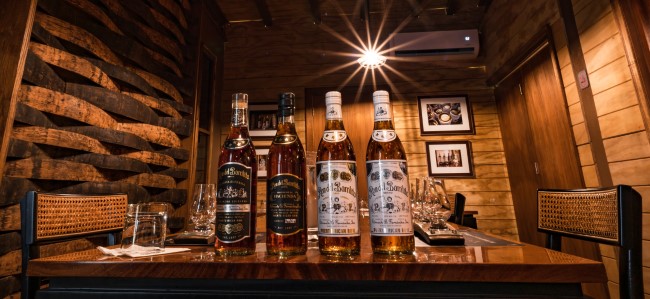
At the same time, the brand has also released its first two new products since the 1930s, the ultra-limited Four Stars and Five Stars–not a cynical ploy for publicity or revenue, but a necessary move to utilize many of the hacienda’s older casks that had been left aging for decades without any intended destination, in danger of being altogether wasted. Ironically, these brands couldn’t exist at all today without some level of oversight having occurred in the past–casks of Ron del Barrilito were never technically meant to have been aging in the warehouses for 35 years, but they now make up the limited ration of Five Stars that exists in the world. Nor will the company be able to easily produce more Four Stars or Five Stars once these bottles are gone–thanks to the lag in production, once these are gone the brands will effectively go into hibernation, potentially for decades. It will be a special day for the company when the segunda edición finally arrives.
Visiting Puerto Rico, one can’t help but note that it is inherently a land of contrasts, with a spirit equally divided among the English and Spanish-speaking worlds. Gas stations sell fuel by the liter, but markets sell milk by the gallon. Speedometers display velocity in miles per hour, but distances are measured in kilometers. It’s fitting that in this place, Ron del Barrilito spends 144 years making what many consider the best rum on the island, but never grows larger than a modest family operation. Until now, that is–in 2024 and beyond, the world will be waking up to the beauty of Pedro Fernández’s dream in 1880. If you want to taste what they were drinking then, you only have to open a bottle of Ron del Barrilito 3 Stars. Here’s to another century of rum.
Jim Vorel is a Paste staff writer and resident beer and liquor geek. You can follow him on Twitter for more drink writing.






































